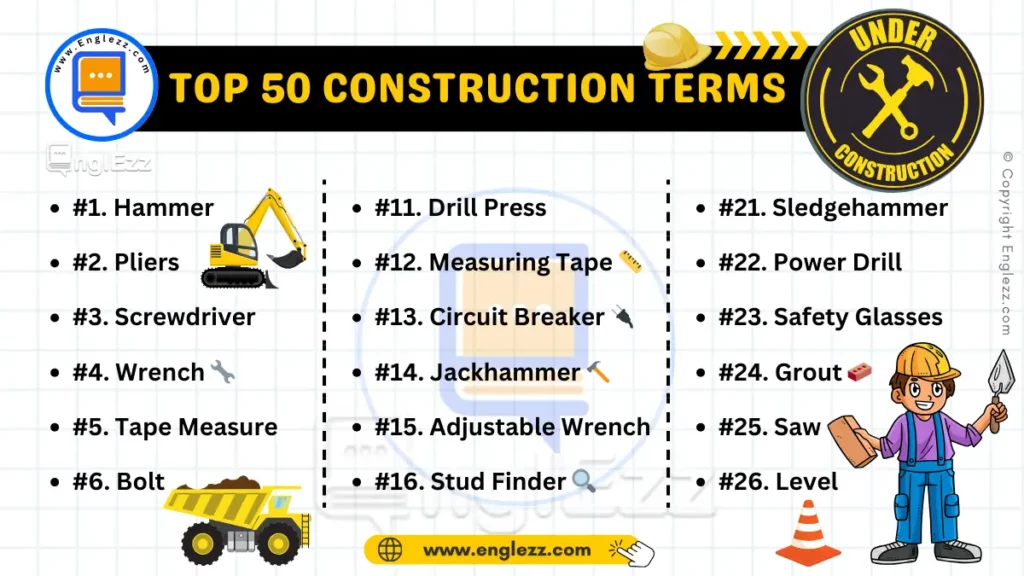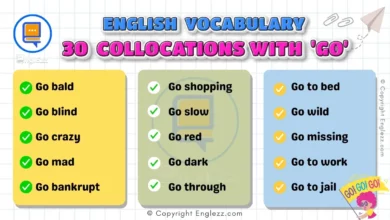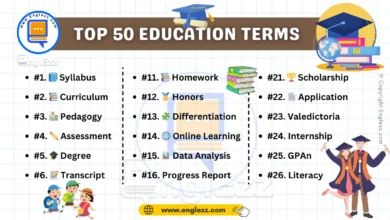In the world of construction, having a solid grasp of industry-specific terminology is crucial for effective communication and successful project completion. This guide is designed to provide a comprehensive list of the 50 most common construction English terms, each explained with a clear definition, phonetic transcription, and practical examples.
Whether you’re a construction worker, engineer, architect, or just someone interested in the field, understanding these terms can significantly enhance your ability to navigate through plans, blueprints, and site instructions with confidence.
Table of Contents
- 50 Construction English Terms Every Student Must Know
- #1. 🏗️ Blueprint /ˈbluːˌprɪnt/
- #2. 🚧 Foundation /faʊnˈdeɪʃən/
- #3. 🛠️ Scaffolding /ˈskæfəldɪŋ/
- #4. 🧱 Bricklayer /ˈbrɪkˌleɪər/
- #5. 🚪 Joist /ʤɔɪst/
- #6. 🪚 Carpenter /ˈkɑːrpəntər/
- #7. 🛡️ Hard Hat /ˈhɑːrd ˌhæt/
- #8. 🔨 Nail Gun /neɪl ɡʌn/
- #9. ⚒️ Plaster /ˈplæstər/
- #10. 🧰 Toolbox /ˈtuːlˌbɑːks/
- #11. 🧤 Gloves /ɡlʌvz/
- #12. 🧱 Mortar /ˈmɔːrtər/
- #13. 🛠️ Wrench /rɛntʃ/
- #14. 🧰 Workbench /ˈwɜːrkˌbɛntʃ/
- #15. 🚧 Excavator /ˈɛkskəˌveɪtər/
- #16. 🪓 Axe /æks/
- #17. 🛠️ Level /ˈlɛvəl/
- #18. 🔩 Bolt /boʊlt/
- #19. 🧰 Screwdriver /ˈskruːˌdraɪvər/
- #20. 🪚 Saw /sɔː/
- #21. 🚧 Cement Mixer /sɪˈmɛnt ˌmɪksər/
- #22. 🛠️ Hammer /ˈhæmər/
- #23. 🧰 Tape Measure /ˈteɪp ˌmɛʒər/
- #24. 🧱 Rebar /ˈriːˌbɑːr/
- #25. 🔧 Socket Wrench /ˈsɒkɪt rɛntʃ/
- #26. 🚪 Drywall /ˈdraɪˌwɔːl/
- #27. 🛠️ Power Drill /ˈpaʊər drɪl/
- #28. 🧤 Safety Glasses /ˈseɪfti ˌɡlæsɪz/
- #29. 🧱 Grout /ɡraʊt/
- #30. 🔌 Circuit Breaker /ˈsɜːrkɪt ˌbreɪkər/
- #31. 🧰 Sledgehammer /ˈslɛʤˌhæmər/
- #32. 🔧 Pipe Wrench /paɪp rɛntʃ/
- #33. 🧰 Chisel /ˈʧɪzəl/
- #34. 🛠️ Ladder /ˈlædər/
- #35. 🔨 Jackhammer /ˈʤækˌhæmər/
- #36. 🧱 Trowel /traʊl/
- #37. 🛠️ Plumb Line /plʌm laɪn/
- #38. 🔧 Allen Wrench /ˈælən rɛntʃ/
- #39. 🧰 Measuring Tape /ˈmɛʒərɪŋ teɪp/
- #40. 🧱 Concrete /ˈkɑːnkriːt/
- #41. 🛠️ Spirit Level /ˈspɪrɪt ˌlɛvəl/
- #42. 🔩 Anchor Bolt /ˈæŋkər boʊlt/
- #43. 🧤 Dust Mask /dʌst mæsk/
- #44. 🧰 Hand Saw /hænd sɔː/
- #45. 🛠️ Tile Cutter /taɪl ˈkʌtər/
- #46. 🧱 Brick Trowel /brɪk traʊl/
- #47. 🛠️ Circular Saw /ˈsɜːrkjələr sɔː/
- #48. 🧤 Ear Protection /ɪər prəˈtɛkʃən/
- #49. 🧰 Utility Knife /juːˈtɪləti naɪf/
- #50. 🧱 Wheelbarrow /ˈwiːlˌbæroʊ/
- Construction English Terms Table
- Wrapping Up
50 Construction English Terms Every Student Must Know
By familiarizing yourself with these terms, you will not only improve your vocabulary but also gain insights into the construction process, from planning to execution.
Ready to build your knowledge? Let’s dive into the essential construction terms that every professional and enthusiast should know! Don’t forget to follow and like @EnglEzz for more educational content. 🚧🔨
#1. 🏗️ Blueprint /ˈbluːˌprɪnt/
Definition: A detailed technical drawing or plan used to design and construct buildings or structures.
Examples:
- “The contractor studied the blueprint before starting the foundation work.”
- Every change in the blueprint must be approved by the architect.
#2. 🚧 Foundation /faʊnˈdeɪʃən/
Definition: The underlying base or support for a structure, usually made of concrete.
Examples:
- “The foundation was laid before the walls were erected.”
- “A strong foundation is critical for the stability of the building.”
#3. 🛠️ Scaffolding /ˈskæfəldɪŋ/
Definition: A temporary structure used to support workers and materials during the construction or repair of a building.
Examples:
- “Scaffolding was erected around the building for the painters.”
- “Ensure the scaffolding is secure before beginning work.”
#4. 🧱 Bricklayer /ˈbrɪkˌleɪər/
Definition: A skilled worker who builds with bricks and mortar.
Examples:
- “The bricklayer completed the exterior walls in record time.”
- “Bricklayers are essential for constructing durable walls.”
#5. 🚪 Joist /ʤɔɪst/
Definition: A horizontal structural member used to support floors or ceilings.
Examples:
- “The joists were installed to support the second floor.”
- “Inspect the joists regularly for any signs of wear.”
#6. 🪚 Carpenter /ˈkɑːrpəntər/
Definition: A skilled worker who makes and repairs wooden structures.
Examples:
- The carpenter crafted custom cabinets for the kitchen.
- Carpenters are often involved in finishing work on a project.”
#7. 🛡️ Hard Hat /ˈhɑːrd ˌhæt/
Definition: A protective helmet worn on construction sites to prevent head injuries.
Examples:
- “All workers are required to wear a hard hat on site.”
- “The hard hat saved him from a serious injury.”
#8. 🔨 Nail Gun /neɪl ɡʌn/
Definition: A power tool used to drive nails into wood or other materials quickly and efficiently.
Examples:
- “The carpenter used a nail gun to secure the beams.”
- “A nail gun can significantly speed up the framing process.”
#9. ⚒️ Plaster /ˈplæstər/
Definition: A mixture of lime, water, and sand used to cover walls and ceilings.
Examples:
- “The plaster was applied to create a smooth finish on the walls.”
- “Plastering is a crucial step before painting.”
#10. 🧰 Toolbox /ˈtuːlˌbɑːks/
Definition: A container used to store and organize tools.
Examples:
- “He always keeps his toolbox organized for quick access.”
- “A well-stocked toolbox is essential for any construction job.”

#11. 🧤 Gloves /ɡlʌvz/
Definition: Protective clothing worn on the hands to prevent injuries.
Examples:
- “Workers must wear gloves when handling sharp objects.”
- “Gloves are necessary when working with concrete.”
#12. 🧱 Mortar /ˈmɔːrtər/
Definition: A mixture used to bond bricks or stones together.
Examples:
- “The bricklayer applied mortar between each brick.”
- “Mortar must be mixed correctly to ensure a strong bond.”
#13. 🛠️ Wrench /rɛntʃ/
Definition: A tool used to turn bolts or nuts.
Examples:
- “He used a wrench to tighten the bolts on the scaffolding.”
- “A wrench is a must-have tool for any construction worker.”
#14. 🧰 Workbench /ˈwɜːrkˌbɛntʃ/
Definition: A sturdy table where construction work, particularly woodwork, is performed.
Examples:
- “The carpenter spent hours at his workbench crafting furniture.”
- “A solid workbench is essential for precision work.”
#15. 🚧 Excavator /ˈɛkskəˌveɪtər/
Definition: A large machine used for digging and moving earth.
Examples:
- “The excavator was brought in to dig the foundation trench.”
- “Operating an excavator requires special training.”
#16. 🪓 Axe /æks/
Definition: A tool with a heavy bladed head mounted across a handle, used for chopping wood.
Examples:
- “He used an axe to clear the trees from the construction site.”
- “Axes are often used in the early stages of site preparation.”
#17. 🛠️ Level /ˈlɛvəl/
Definition: A tool used to determine if a surface is horizontal (level) or vertical (plumb).
Examples:
- “The mason used a level to ensure the wall was straight.”
- “A level is crucial for accurate construction.”
#18. 🔩 Bolt /boʊlt/
Definition: A type of fastener typically used with a nut to secure objects together.
Examples:
- “The steel beams were secured with large bolts.”
- “Always choose the right size bolt for the job.”
#19. 🧰 Screwdriver /ˈskruːˌdraɪvər/
Definition: A tool used to turn screws into materials such as wood or metal.
Examples:
- “He used a screwdriver to attach the hinges to the door.”
- “A screwdriver is an essential tool in every toolbox.”
#20. 🪚 Saw /sɔː/
Definition: A tool consisting of a tough blade, wire, or chain with a hard-toothed edge, used to cut through material.
Examples:
- “He cut the wood to size with a handsaw.”
- “Power saws are used for larger, more demanding tasks.”
#21. 🚧 Cement Mixer /sɪˈmɛnt ˌmɪksər/
Definition: A machine used to mix cement, sand, and water to form concrete.
Examples:
- “The cement mixer ran continuously throughout the day.”
- “Using a cement mixer ensures the mixture is well-blended.”
#22. 🛠️ Hammer /ˈhæmər/
Definition: A tool with a heavy metal head used to drive nails or break objects.
Examples:
- “He used a hammer to drive the nails into the wood.”
- “A hammer is one of the most commonly used tools in construction.”
#23. 🧰 Tape Measure /ˈteɪp ˌmɛʒər/
Definition: A flexible ruler used to measure size or distance.
Examples:
- “The carpenter measured the wood using a tape measure.”
- “Accuracy is key, so always double-check with a tape measure.”
#24. 🧱 Rebar /ˈriːˌbɑːr/
Definition: Steel bars used to reinforce concrete.
Examples:
- “Rebar was placed in the foundation before pouring the concrete.”
- “Proper rebar placement is essential for structural integrity.”
#25. 🔧 Socket Wrench /ˈsɒkɪt rɛntʃ/
Definition: A type of wrench that uses sockets to turn fasteners.
Examples:
- “He used a socket wrench to assemble the metal framework.”
- “Socket wrenches are ideal for working in tight spaces.”
#26. 🚪 Drywall /ˈdraɪˌwɔːl/
Definition: A panel made of gypsum plaster pressed between thick sheets of paper, used to create walls and ceilings.
Examples:
- “The drywall was installed before painting the interior.”
- “Drywall is a popular material due to its ease of installation.”
#27. 🛠️ Power Drill /ˈpaʊər drɪl/
Definition: An electric tool used for drilling holes or driving screws.
Examples:
- “The contractor used a power drill to hang the cabinets.”
- “Power drills make quick work of tough materials.”
#28. 🧤 Safety Glasses /ˈseɪfti ˌɡlæsɪz/
Definition: Protective eyewear worn to shield the eyes from debris and harmful substances.
Examples:
- “Safety glasses are mandatory when cutting or grinding materials.”
- “He wore safety glasses to protect his eyes from flying particles.”
#29. 🧱 Grout /ɡraʊt/
Definition: A paste used to fill the gaps between tiles.
Examples:
- “The tiler applied grout to seal the joints between the tiles.”
- “Grout must be cleaned thoroughly after application.”
#30. 🔌 Circuit Breaker /ˈsɜːrkɪt ˌbreɪkər/
Definition: A device that interrupts an electrical circuit to prevent overload or short circuits.
Examples:
- “The circuit breaker tripped, cutting power to the building.”
- “Always label circuit breakers clearly for safety.”
#31. 🧰 Sledgehammer /ˈslɛʤˌhæmər/
Definition: A large, heavy hammer used for demolition work.
Examples:
- “The worker used a sledgehammer to break up the concrete slab.”
- “Sledgehammers are essential for heavy-duty demolition tasks.”
#32. 🔧 Pipe Wrench /paɪp rɛntʃ/
Definition: A wrench designed for gripping and turning pipes.
Examples:
- “He used a pipe wrench to tighten the plumbing connections.”
- Pipe wrenches come in various sizes for different applications.
#33. 🧰 Chisel /ˈʧɪzəl/
Definition: A tool with a sharp edge at the end of a metal blade, used to shape wood, stone, or metal.
Examples:
- “The carpenter used a chisel to create intricate designs in the wood.”
- “Chisels must be kept sharp for precise work.”
#34. 🛠️ Ladder /ˈlædər/
Definition: A portable set of steps used for climbing up or down.
Examples:
- “The painter used a ladder to reach the top of the wall.”
- “Always secure the ladder on a stable surface before use.”
#35. 🔨 Jackhammer /ˈʤækˌhæmər/
Definition: A pneumatic tool used to break up rock, pavement, and concrete.
Examples:
- “The workers used a jackhammer to demolish the old sidewalk.”
- “Operating a jackhammer requires strength and protective gear.”
#36. 🧱 Trowel /traʊl/
Definition: A small hand tool used for applying and smoothing mortar or plaster.
Examples:
- “The mason used a trowel to spread the mortar evenly.”
- “Trowels are essential for finishing concrete surfaces.”
#37. 🛠️ Plumb Line /plʌm laɪn/
Definition: A string with a weight at the end, used to determine a vertical line.
Examples:
- “The builder used a plumb line to ensure the wall was perfectly vertical.”
- “Plumb lines are crucial for accurate construction alignment.”
#38. 🔧 Allen Wrench /ˈælən rɛntʃ/
Definition: A small, L-shaped tool used to turn screws and bolts with hexagonal sockets.
Examples:
- “He used an Allen wrench to assemble the furniture.”
- “Allen wrenches are commonly used in furniture and bike assembly.”
#39. 🧰 Measuring Tape /ˈmɛʒərɪŋ teɪp/
Definition: A flexible tool used to measure length, width, or height.
Examples:
- “The builder used a measuring tape to ensure accurate cuts.”
- “A good measuring tape is indispensable in any construction project.”
#40. 🧱 Concrete /ˈkɑːnkriːt/
Definition: A building material made from a mixture of cement, sand, gravel, and water.
Examples:
- “The workers poured concrete to create the foundation.”
- “Concrete is one of the most commonly used construction materials.”
#41. 🛠️ Spirit Level /ˈspɪrɪt ˌlɛvəl/
Definition: A device used to check if a surface is level or plumb, using a bubble in a liquid-filled tube.
Examples:
- “The carpenter used a spirit level to ensure the shelf was straight.”
- “Spirit levels are essential for achieving accurate measurements.”
#42. 🔩 Anchor Bolt /ˈæŋkər boʊlt/
Definition: A bolt used to attach objects or structures to concrete.
Examples:
- “Anchor bolts secured the steel beams to the foundation.”
- “Proper installation of anchor bolts is critical for stability.”
#43. 🧤 Dust Mask /dʌst mæsk/
Definition: A protective mask worn to prevent inhalation of dust and other particles.
Examples:
- “He wore a dust mask while sanding the drywall.”
- “Dust masks are essential for respiratory protection in dusty environments.”
#44. 🧰 Hand Saw /hænd sɔː/
Definition: A manually operated saw used for cutting wood or other materials.
Examples:
- “The carpenter used a hand saw to trim the wood.”
- “Hand saws are useful for small, precise cuts.”
#45. 🛠️ Tile Cutter /taɪl ˈkʌtər/
Definition: A tool used to score and snap tiles to a desired size.
Examples:
- “The tiler used a tile cutter to fit the tiles around the edges.”
- “Tile cutters make it easy to customize tile shapes.”
#46. 🧱 Brick Trowel /brɪk traʊl/
Definition: A trowel with a flat, pointed blade, used by bricklayers to spread mortar.
Examples:
- “The bricklayer used a brick trowel to apply mortar.”
- “Brick trowels are essential for precise brickwork.”
#47. 🛠️ Circular Saw /ˈsɜːrkjələr sɔː/
Definition: A power saw with a circular blade, used for cutting wood, metal, or plastic.
Examples:
- “He used a circular saw to cut the plywood for the roof.”
- “Circular saws are ideal for making long, straight cuts.”
#48. 🧤 Ear Protection /ɪər prəˈtɛkʃən/
Definition: Devices like earplugs or earmuffs used to protect ears from loud noises.
Examples:
- “The worker wore ear protection while using the jackhammer.”
- “Ear protection is crucial on noisy construction sites.”
#49. 🧰 Utility Knife /juːˈtɪləti naɪf/
Definition: A knife with a retractable blade used for cutting various materials.
Examples:
- “He used a utility knife to cut the insulation.”
- “Utility knives are versatile tools for various cutting tasks.”
#50. 🧱 Wheelbarrow /ˈwiːlˌbæroʊ/
Definition: A small, hand-propelled vehicle with one wheel, used for carrying loads.
Examples:
- “The workers used a wheelbarrow to transport concrete.”
- “Wheelbarrows are essential for moving materials on a construction site.”
Construction English Terms Table
| #1. Hammer 🛠️ | #11. Drill Press 🛠️ | #21. Sledgehammer 🧰 |
| #2. Wrench 🔧 | #12. Measuring Tape 📏 | #22. Power Drill 🛠️ |
| #3. Screwdriver 🪛 | #13. Saw 🔪 | #23. Safety Glasses 🧤 |
| #4. Pliers 🔧 | #14. Level 📏 | #24. Grout 🧱 |
| #5. Tape Measure 📏 | #15. Adjustable Wrench 🔧 | #25. Circuit Breaker 🔌 |
| #6. Bolt 🧰 | #16. Stud Finder 🔍 | #26. Jackhammer 🔨 |
| #7. Nuts and Bolts 🔩 | #17. Allen Wrench 🔧 | #27. Trowel 🧱 |
| #8. Level 📏 | #18. Socket Set 🧰 | #28. Spirit Level 🛠️ |
| #9. Drill 🛠️ | #19. Utility Knife 🔪 | #29. Ear Protection 🧤 |
| #10. Safety Gear 🧥 | #20. Chisel 🔨 | #30. Wheelbarrow 🧱 |
Wrapping Up
Mastering construction vocabulary is crucial for anyone working in or around the industry. These 50 common terms serve as the building blocks for effective communication, whether you’re on-site, in a meeting, or studying construction practices.
Understanding these terms will not only help you follow instructions more accurately but also ensure that you can participate in discussions and make informed decisions. As you become more familiar with these terms, you’ll find that navigating the complexities of construction becomes much easier.
Keep this list handy as a reference, and don’t hesitate to review it as needed. The construction field is constantly evolving, and staying updated with the latest terminology will give you an edge in your career. Now that you’ve strengthened your construction vocabulary, you’re better equipped to tackle the challenges of any construction project with confidence.
Don’t forget to share this post with others who might find it helpful, and follow @EnglEzz for more educational content!









🚧 Ready to ace your construction vocabulary? Dive into our comprehensive guide featuring 50 essential construction terms explained with clear definitions and practical examples.
🔨 Discover how these terms can enhance your understanding and efficiency on the job. Follow and like @EnglEzz for more insightful content and updates. Check out the full post here:
.
https://www.englezz.com/most-common-construction-english-terms/
.
#EnglEzz #vocabulary #linguistics #learnenglish #construction #DIY #tooltips #building #homeimprovement